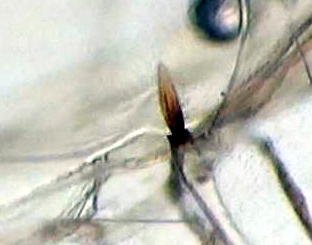Posted by solito de solis on 02-05-2017 22:21
#1
Hey dipterists
I know or I have been informed that Anopheles determination is difficult by only morphologic approach
Nevertheless..
I have observed Anopheles larvae collected in a pond close to the Dutch border, and after bringing on the larvae to the pupa stage, and after waiting exit of the exuvia, to the alive adult insect...
WOuld it be possible with your help to make the most complete approach with features of the three stades (larva, pupa, adult)
I have consulted a lot of litterature about Anopheles morphology
and I'm a little bit lost... with sometimes contradictory informations or perhaps non-correctly understood by my fault
First I thought it was male Anopheles claviger
but... now Maculipennis complex ? Atroparvus ?
I could put here all the pictures needed of usefull details to go ahead : larva-pupa-adult
pupa air trump
head dorsal view
pupa seta 9 segment
I hope you will help
Merci beaucoup
SDS
PS: Anopheles Atroparvus is found in Belgium
Edited by solito de solis on 03-05-2017 20:29

